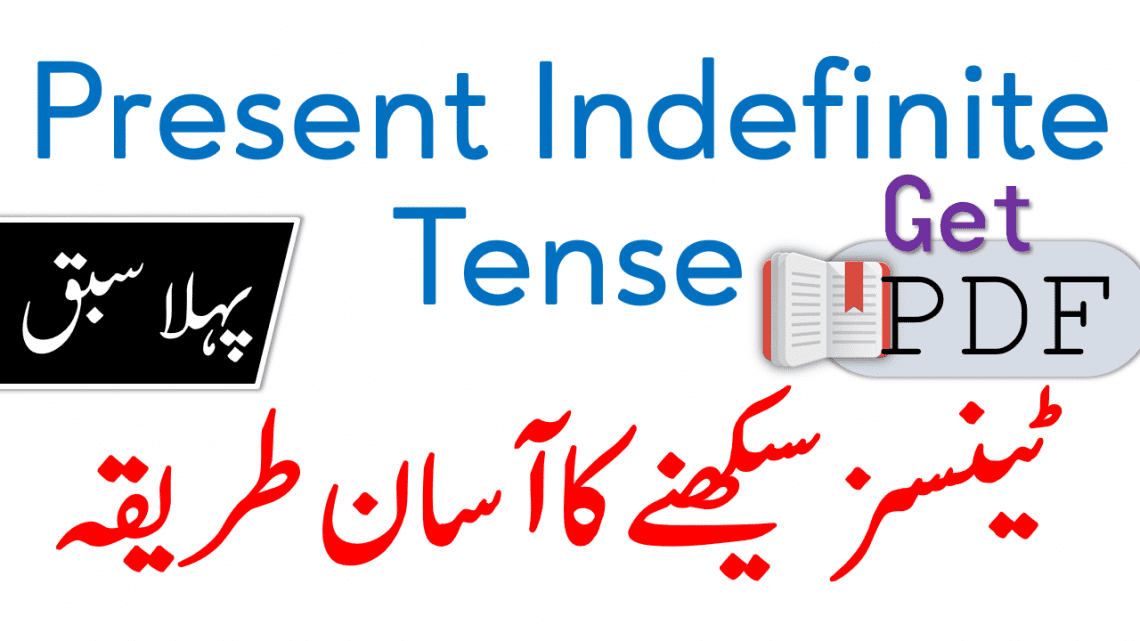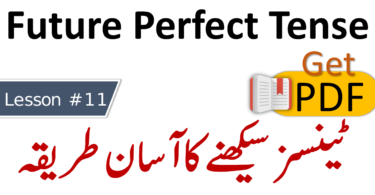The Present Indefinite Tense is essential for expressing daily routines, universal truths, and habitual actions. Many learners struggle with its correct usage, especially when forming negative and interrogative sentences. In this blog post, we’ll simplify the structure and rules of the Present Indefinite Tense, making it easier for you to construct accurate sentences in both English and Urdu.
To further enhance your understanding, explore our grammar section for more detailed explanations and examples.
VIDEO LESSON
Table of Contents
✅ Present Indefinite Tense (فعل حال مطلق)
Below is a detailed explanation of the Present Indefinite Tense, including its usage, sentence structure, classification, and examples with their Urdu explanations. This tense is essential for expressing routine actions, general truths, and repeated behaviors, and understanding its structure will help learners communicate more clearly in everyday situations.
Urdu Identification:
جملے کے آخر میں “تا ہے”، “تی ہے”، “تے ہیں”، “تا ہوں” وغیرہ آتے ہیں۔
🔹 Use of Present Indefinite Tense
- Habits – عادات
- Universal Truths – سچائیاں
- Daily Actions – روزمرہ کے کام
Simple Sentences (سادہ فقرات):
Simple sentences in the Present Indefinite Tense describe habitual actions or general truths. They follow a basic structure with the subject, verb (in its base form), and object, such as “I play cricket” or “He reads books.”
Structure:
Subject + Base Verb (1st form) + Object
✔️ I/we/you/they + verb (base form)
✔️ He/she/it + verb + s/es
🔸 Examples Sentences
- I go to bazaar.
میں بازار جاتا ہوں - He goes to school.
وہ اسکول جاتا ہے - She washes the clothes.
وہ کپڑے دھوتی ہے - You play cricket.
تم کرکٹ کھیلتے ہو - We sing a song.
ہم گانا گاتے ہیں - They like apples.
وہ سیب پسند کرتے ہیں
Negative Sentences (منفی جملے):
Negative sentences in the Present Indefinite Tense are formed by adding “do not” or “does not” before the base form of the verb. For example, “I do not like tea” or “She does not go to school.”
Structure:
Subject + Do/Does + Not + Base Verb + Object
✔️ I/We/You/They + do not + verb
✔️ He/She/It + does not + verb
- Do is used with I, We, You, They
- Does is used with He, She, It
🔸 Examples Sentences
- He does not go to school.
وہ اسکول نہیں جاتا - She does not make tea.
وہ چائے نہیں بناتی - It does not rain.
بارش نہیں ہوتی - I do not like apples.
میں سیب نہیں پسند کرتا
Interrogative Sentences (سوالیہ جملے):
Interrogative sentences in the Present Indefinite Tense are formed by placing “do” or “does” at the beginning of the sentence, followed by the subject and the base form of the verb. For example, “Do you play cricket?” or “Does he work hard?”
Structure:
Do/Does + Subject + Base Verb + Object?
✔️ Do I/we/you/they + verb?
✔️ Does he/she/it + verb?
🔸 Examples Sentences
- Does he go to school?
کیا وہ اسکول جاتا ہے؟ - Do you work hard?
کیا تم محنت کرتے ہو؟ - Do they obey parents?
کیا وہ والدین کی بات مانتے ہیں؟
Interrogative + Negative Sentences (سوالیہ اور منفی جملے):
Interrogative + Negative sentences in the Present Indefinite Tense combine “do/does” with “not” to form a question and negate the action. For example, “Do you not like coffee?” or “Does she not attend the meeting?” This structure is used when asking a question while also negating the action.
Structure:
Do/Does + Subject + Not + Base Verb + Object?
✔️ Do I/we/you/they not + verb?
✔️ Does he/she/it not + verb?
🔸 Examples Sentences
- Do they not play together?
کیا وہ ایک ساتھ نہیں کھیلتے؟ - Does she not ride a bike?
کیا وہ موٹر سائیکل نہیں چلاتی؟
💡 Helpful Tips
- Only use “s/es” with He/She/It in positive sentences.
- Use “Do” for I, We, You, They; use “Does” for He, She, It.
- Always use 1st form of verb in Present Indefinite.
Conclusion
The Present Indefinite Tense is used to describe habits, general truths, and repeated actions. It is crucial for basic communication and helps learners express everyday activities in English. Mastering this tense provides a foundation for more advanced grammar.


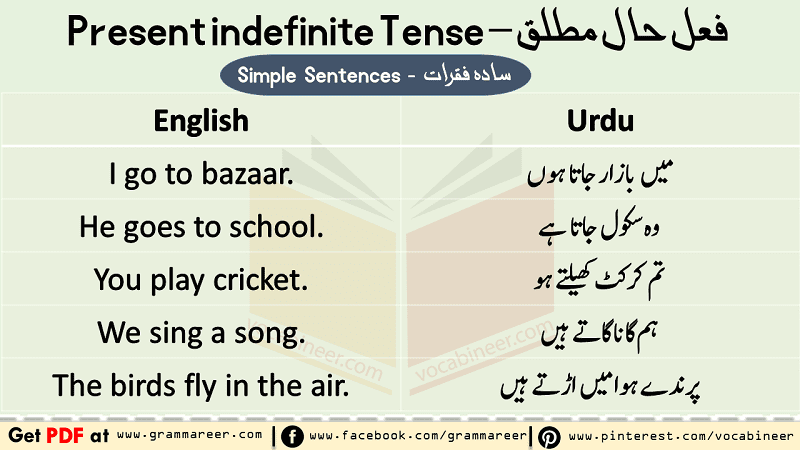
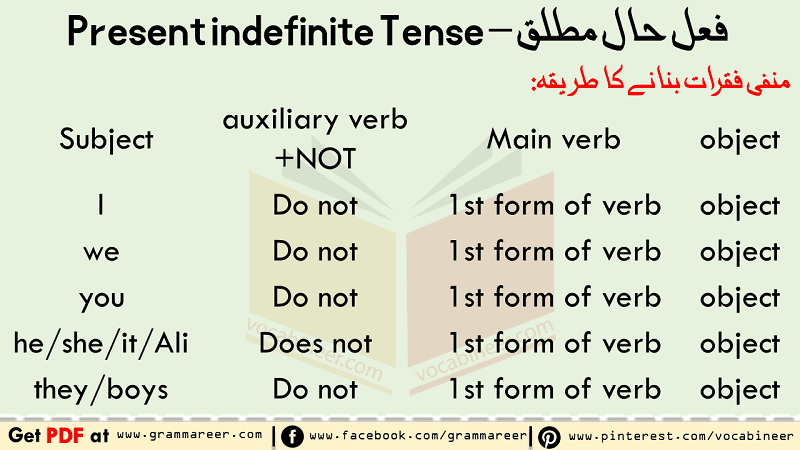
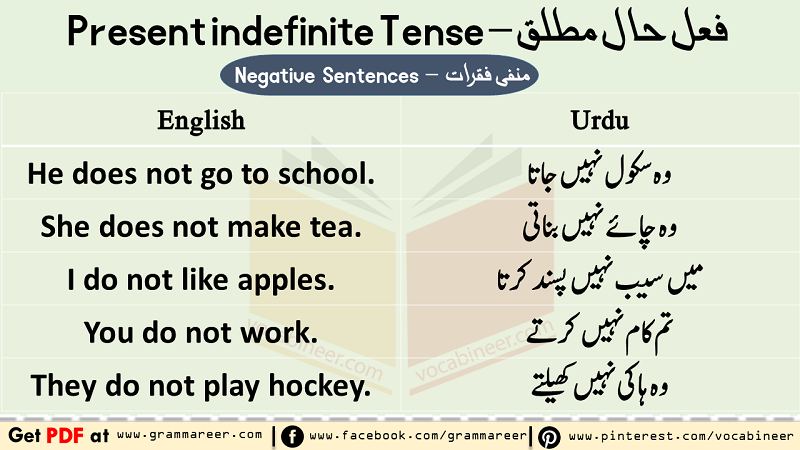
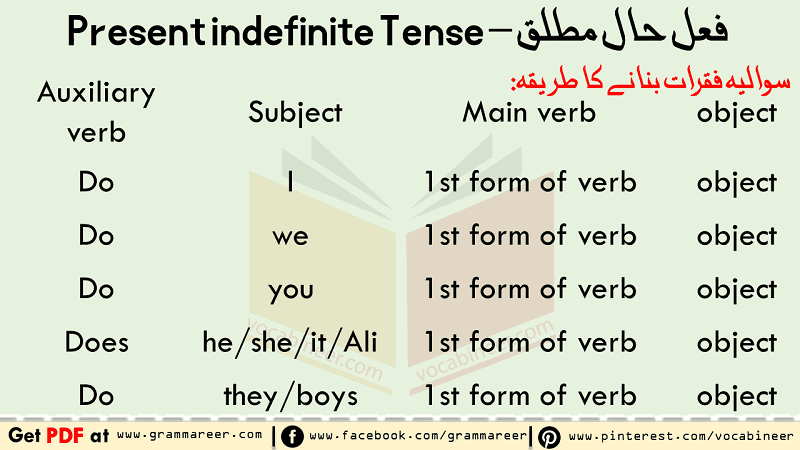
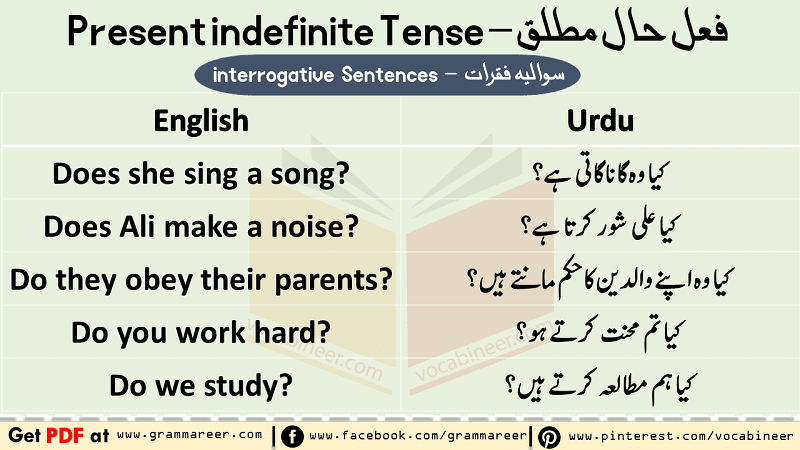
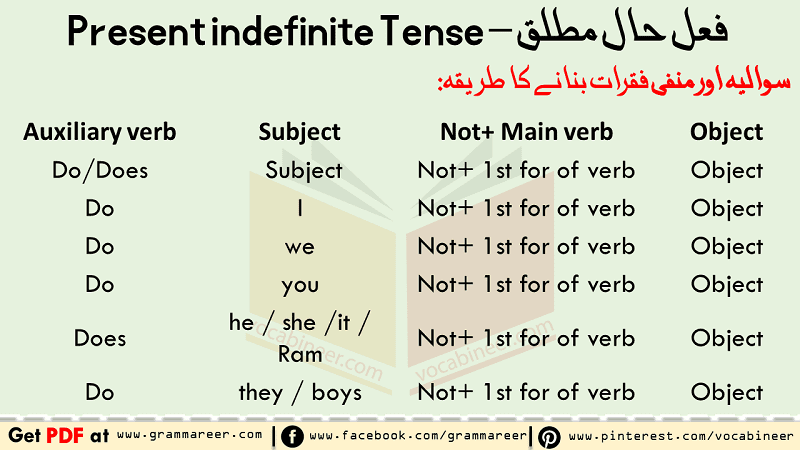
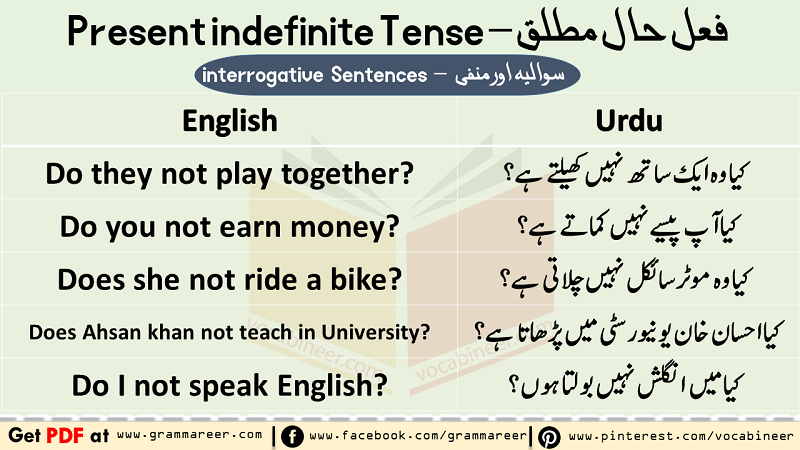
Download PDF
You May Also Like

